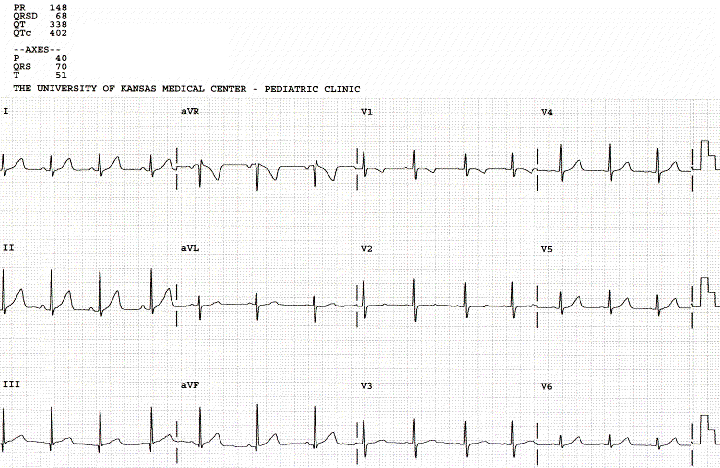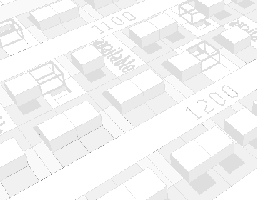
[The Heart] [Heart Disease - The basics] [Tests for Heart Disease] [Open Heart Surgery] [Congenital Heart Defects]
Please wait ! Before you proceed further, have you READ MY DISCLAIMER ? If not, DO IT NOW....or proceed at your own risk.

To attempt to explain here HOW heart disorders are detected is a task beyond my meager skills. But that's what your doctor - called a CARDIOLOGIST - is there for ! The cardiologist will examine a patient first, and then suggest some tests to help in saying whether the heart is normal or not. I will describe here some of these tests.
What are X-rays ? They are a special kind of radiation, a little like sun-light. When sunlight strikes a glass window, it passes through it freely. But when it strikes a door, or wall, or even YOU, it does not pass through. Instead, it is blocked and causes a shadow. X-rays are a more powerful kind of light radiation. They are invisible to the normal eye. They are strong enough to pass through a door, or a wall, OR EVEN YOU ! Well, almost. While X-rays can pierce skin and muscle, they are blocked by bones, and a few other organs - like the heart - which then cast a shadow. This shadow, like the X-rays, is invisible to the human eye. Then how to see it ? The shadow can be recorded on a special film, just like the film you put into a camera when you shoot your photograph.
This fact was discovered almost accidentally by a scientist named WILHELM ROENTGEN, in whose honour, X-rays are also called Roentgen rays ! Why are they called X-rays ? Good question. When they were first discovered, no one knew the nature of the radiation that was forming these shadows. So it was the mysterious "X" radiation, which soon came to be known as "X-ray".
How is an X-ray taken ? Having an X-ray done is NOT painful or uncomfortable. After taking off the clothes covering your upper body, you will be made to stand facing a "plate" that has the film to record your "x-ray shadow". The person who takes your x-ray is called a RADIOGRAPHER. He or she will position the machine, and ask you to hold your breath for a few seconds. With a push of a button, the x-ray is taken in just a flash. You won't even know it's over until you are told by the radiographer ! The x-ray is then "developed" by a process similar to that used for photographs. The X-ray film is now ready for your doctor to examine !
How are X-rays helpful in diagnosing heart disease ? The shadow formed on the film gives a doctor information about the heart - its size, its shape and its function. It also shows the lungs, the blood vessels and bones. By a careful study of the X-ray, the doctor decides if the heart is normal or not.
But an X-ray is not a magic "disease detector" ! Often, other tests also are needed to give more details about the heart.
This is how a normal X-ray looks !

An echocardiogram (or an ECHO, as we docs say), also called an ULTRASOUND STUDY, is yet another test to help assess the heart.
What is Ultrasound ? "Sound" is something we can hear. Talk, music, noise - all are kinds of sound. Sound is measured by its FREQUENCY - in units called HERTZ. The human ear can hear sound with a frequency range of 20 to 20,000 Hertz. Sound of a HIGHER FREQUENCY than 20,000 Hertz is called ULTRA SOUND !
Why use Ultrasound ? Sound travels in WAVES. These are similar to waves of water in the ocean. When the waves in the sea strike the shore, they stop and are reflected back into the sea. In a similar way, sound waves too are reflected when they strike some surface. Ultrasound however, because of its high frequency, can penetrate the human body slightly. Still, when it strikes deeper organs like the heart, it is reflected back. By studying these reflected ultrasound waves, it is possible to create a picture of the heart ! This picture, though not like a photograph of the heart, gives a trained person like the doctor vital information about the heart and any defects in it.
How is an Echocardiogram taken ? Again, like an X-ray, this is NOT painful or uncomfortable. You will be asked to lie on a couch and the cardiologist will apply a "jelly" over your chest. This jelly helps to easily transmit the ultrasound waves from the machine to your body. The doctor will then place a "transducer", which is a small stick-like thing, over your chest. There is absolutely no sensation over the chest while the ultrasound examination is being done. The pictures of your heart will come up on a video screen. Your doctor sees it, and may record it on video tape or on photographic paper.
This is how a normal Echocardiogram looks !

What can the doctor see on an Echocardiogram ? The different parts of the heart - the valves, the chambers (atrium and ventricle), the aorta and pulmonary artery - are all clearly seen. Any abnormality in these can be readily identified. If there are any "holes" in the walls between the different chambers, these too can be seen. In addition, the direction of flow of blood, and any block or leak in the valves, can be detected using one more property of ultrasound called the DOPPLER effect.
What is this "Doppler Effect" ? This again has to do with sound. Have you heard the whistle of a train as it comes towards you ? The tone of the whistle, or its "pitch", seems to get higher as the train approaches you. Then as it crosses you and goes away, the whistle again seems lower pitched. This is due to a change in the frequency of the sound waves of the whistle, as the train changes position and direction with respect to you ! And this change is called the Doppler effect.
How is this useful in heart disease ? Compare the moving blood inside the heart to the train in our example. When ultrasound waves from the echocardiogram machine are reflected from this moving blood, the frequency of the reflected waves differs DEPENDING ON THE DIRECTION OF BLOOD FLOW. By studying this reflected wave, the doctor can know how blood is flowing inside the heart, and if there is any block or leak in the heart valves ! Now, isn't that fantastic ?!
This is how a Doppler study looks !

The electrocardiogram is also called the EKG or ECG. It is nothing but a graph, recording ELECTRICAL ACTIVITY of the heart.
"What ! Does my heart have a current running through it ?" Sure...but a very weak one. Earlier, I told you how the heart "contracts" and pumps blood to the rest of the body. This contraction is started off by a weak electric current. This current begins in a part of the heart called the PACEMAKER. It is named so because it "sets the pace" for the heart to beat. From the pacemaker, normally, this current follows a well-defined path through the rest of the heart. This movement can be recorded by "electrodes" - which are simply metal plates to detect current - placed on the chest, wrists and ankles. The graph recorded in this way is the EKG.
Here's how an EKG looks !

So how is the EKG recorded ? This is another painless test. The nurse or doctor or technician who will record the EKG ties the "electrodes" (or pastes them) onto both wrists and ankles, and on the chest, after first applying a "jelly" to the site. As in an Echo, the jelly helps better conduct the electric current in your heart to the machine for recording. By suitable changes to the dials on the machine, the technician records your EKG on a strip of graph paper. It only takes a few minutes, maybe even less !
What does the EKG tell my doctor ? The EKG is not specific for detecting any disease by itself. But when viewed along with the other tests like an X-ray and Echocardiogram, the EKG can be very informative. Mainly, the EKG helps detect disturbances in the pattern of electrical activity in the heart - a condition called ARRHYTHMIA. (Though it sounds exotic, the name only means the opposite of "rhythm" ! ). The EKG also tells the doctor if any chamber of the heart is abnormally huge or thick walled.
All the tests I have mentioned until now are "NON-INVASIVE" - that is, there are no injections or tube insertions or things like that. The catheterization test, however, is an "INVASIVE" test, needing an injection.
Catheterization is usually done under "local" anesthesia - in other words, some medicine is injected over the groin (or fore-arm), which makes the skin numb and pain-free. Sometimes, usually in very small children, it may have to be done under general anesthesia - or "full unconcsiousness". A special thin plastic tube, called a CATHETER, is threaded into an artery in the groin (or fore-arm) after a needle-stick. The catheter is then guided into the heart. The pressure of the blood inside the different heart chambers is measured. The amount of oxygen - the life-giving gas in air - that is present in the blood is also measured. Then an ANGIOGRAM is performed.
What is an angiogram ? It is a special kind of X-ray of the heart and arteries taken after injecting a dye into the heart. This dye is "opaque" to x-rays, and does not let them through, casting a shadow. Since the dye is injected INSIDE the heart, the shadow that is cast will be in the shape of the heart ! From studying this shadow, the doctor knows the size and shape of the heart and its different chambers and its ability to work normally.
The catheterization and angiogram tests are extremely useful ones to the doctors who are planning the treatment of a patient with heart disease. At the same time, there are some risks involved in the procedure. Some people have an allergy to the dye used in angiography. Rarely, catheterization can cause irregularity in heart beats, injury to the heart chambers or sudden worsening of coronary artery disease. In very rare instances, particularly in very sick patients, death has occurred.
Before a patient undergoes a catheterization and angiogram, a detailed discussion with the attending doctor will be useful. Any doubts about the procedure could be cleared, and the risks to a particular patient could be explained and understood. The aim is to have a well-informed, calm and quiet patient coming to the catheterization laboratory !
These then are the commonly performed tests to diagnose heart disease. As technology advances, many other "new" tests are devised for studying the heart. Some of these are Computerized Tomography Scan (CT scan), Magnetic Resonance Imaging (MRI), MUGA Scan (also called Radio Isotope Scan) and Positron Emission Tomography Scan (PET scan). Each of these have special uses and drawbacks, and are applied in only certain diseases. I will not discuss these tests for this reason - that they are not "routine".
Hopefully, you have now understood something about the tests doctors prescribe for detecting heart disease. We can now move onto discussing about particular types of heart disease.

I hope you enjoyed reading this piece as much as I did writing it !
 Let me know what you think about it. Fill in my "Self-Assessment Form". Or just E-Mail me at "sivaraj@giasmd01.vsnl.net.in".
Let me know what you think about it. Fill in my "Self-Assessment Form". Or just E-Mail me at "sivaraj@giasmd01.vsnl.net.in".
 Get your own Free Home Page
Get your own Free Home Page